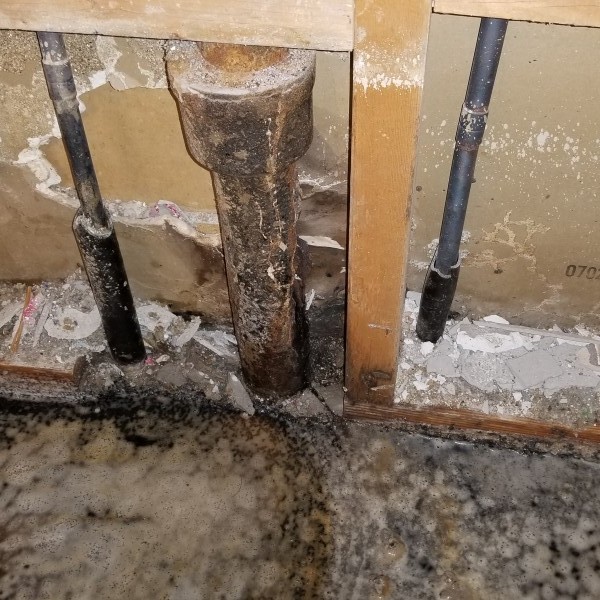Stopping Water Damage in the Bathroom
Stopping Water Damage in the Bathroom
Blog Article
How do you really feel in relation to How to Prevent Bathroom Water Damage?

The shower room is exceptionally vulnerable for damp accumulation as well as possible water damage because of the constant use of water in it. This short article uses simple inspection methods to aid detecting water damage risks.
The constant use water in the bathroom makes it incredibly prone for wet accumulation and prospective water damages. By evaluating it routinely, you can decrease water associated problems.
The adhering to collection of examinations is very easy to execute and also need to be done as soon as in every 3 months in order to maintain your washroom healthy and also to stop possible water problems brought on by the bath tub, the shower, pipeline joints as well as plumbing, sinks, cupboards, as well as the bathroom
Do not overlook carrying out these evaluations and be comprehensive while performing them. Keep in mind that these straightforward examinations can conserve you a great deal of money by offering very early signs for water damages
Sinks as well as Cabinets
Sinks as well as cabinets are exposed to dampness and also moisture everyday as well as are frequently overlooked. Evaluate on a regular basis under the sink and on the countertop over it. Fix any type of drip in the trap as it might recommend drain problems. Check out the sink, slow-moving draining pipes may show an obstructed drain. Replace sink seals if they are fractured or loosened.
Bathtub and also Shower
The shower and also tub require unique interest and upkeep. Inspect the tiles and also change if broken. See to it that there is no missing grout in between the tiles. Check and change split caulking at joints where the wall surfaces satisfy the floor or the bath tub. Obstructed drains pipes and pipelines issues will stop the tub from drying and may indicate significant problems under the tub. Seek advice from a professional quickly to avoid structural damages. Pay attention to stainings or soft areas around the tub wall surfaces as they may suggest an internal leakage.
Plumbing
Signs for water damage are difficult to detect considering that many pipelines are installed inside the wall surfaces.
Pay special interest to floor covering as well as wall surfaces moisture and also stains as they might show an invisible plumbing trouble. Examine moisture levels in adjacent spaces as well.
The Commode
The bathroom is a vulnerable water joint. Inspect the water lines and also search for leakages around the toilet seat, in the tube, and under the water container. If you discover any kind of indications of dampness on the floor around the toilet, look for leakages in the toilet rim as well as container seals.
Know that hanging commode bowl deodorants boosts the opportunities for clogs.
10 TIPS TO PREVENT WATER DAMAGE IN THE BATHROOM
The average household uses approximately 80-100 gallons of water per person per day. For a family of 4, that's almost 2,500 gallons of water a week! The largest portion of this consumption comes from bathroom use. Flushing the toilet uses the most water, followed by taking a shower or bath. With that much water running through the home, water damage in the bathroom is bound to happen. Knowing how to spot signs of a water leak is essential to preventing long-term damage. This guide provides you with tips to reduce the impact of water damage on your bathroom.
CAUSES OF BATHROOM WATER DAMAGE
Pipe breaks are the most common cause of water damage we see in our daily jobs. The age of a pipe plays a large role in a pipe break as well as corrosion. Over time, the metal begins to break down, allowing water to escape. Frozen pipe breaks are also a concern in the winter months. Toilet overflows caused by paper products or children flushing inappropriate items. Degraded caulking around the toilet or bathtub can allow water seepage, sometimes behind the fixture, into the subfloor or walls. Condensation forms when the water in a pipe is cooler than the air temperature. Beads of water form on the exterior of the pipes, sometimes so much so that the water begins to drip and pool below. Sink or shower backups created by poor drainage. HOW TO PREVENT WATER DAMAGE IN YOUR BATHROOM
Inspect your toilet supply line for worn or frayed hoses and replace them as needed. Winterize your plumbing to prevent a frozen pipe break. Use vent fans to prevent condensation that can lead to mold growth. Routinely check and replace degraded caulking around your toilet or bathtub. Increase the temperature in your toilet tank and insulate your pipes during the warm summer months to keep condensation from forming. Use child safety locks on the toilets. Flush only toilet paper. "Flushable" wet wipes are actually not good for your plumbing system. Additionally, feminine hygiene products should not be flushed. Prevent water from escaping the tub or shower. Make sure shower curtains are in good condition. Inspect shower doors and replace the seal strip if necessary. Wipe up any water that accumulates on the floor and use bath mats. Water left to sit can cause damage to the tiles and flooring. Refrain from using bath products containing heavy oils to avoid a clogged drain.

I came across that piece of writing about Looking for Signs of Water Damage in the Bathroom when doing a lookup on the web. Enjoyed reading our blog entry? Please share it. Help another person find it. We take joy in reading our article about How to Fix a Water Damage Bathroom.
Visit Homepage Report this page